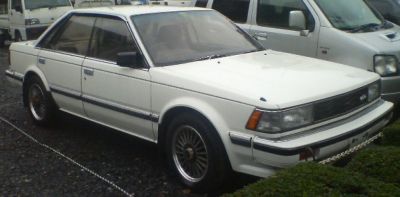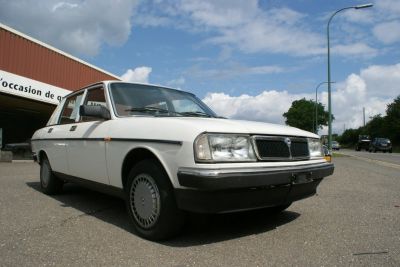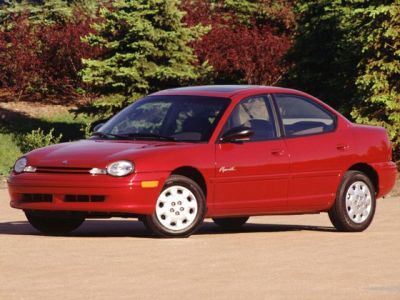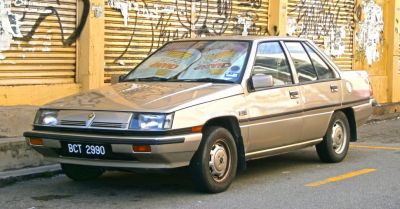 1989 Lancia Dedra (835) Dimensions, Size & Specs
1989 Lancia Dedra (835) Dimensions, Size & SpecsMeasurements of the 1989 Lancia Dedra, engineered for optimal performance and comfort
| Dimensions | |
|---|---|
| Length: | 4345 mm171.1 in14.3 ft |
| Width: | 1700 mm66.9 in5.6 ft |
| Height: | 1417-1430 mm55.8-56.3 in4.6-4.7 ft |
| Trunk Capacity: | 405-480 liter14.3-17.0 cu ft |
| Weight Specifications | |
| Curb Weight: | 1060-1350 kg2337-2976 lbs |
| Maximal permitted Weight: | 1590-1780 kg3505-3924 lbs |
| Tire Specifications | |
| Rims Sizes: | 14-inch rims:
|
| Tire Sizes: |
|
The Lancia Dedra (835) is a mid-size sedan produced by the Italian automaker Lancia between 1989 and 1999. With a length ranging from 4340 to 4345 mm (170.9 to 171.1 inches), this vehicle offers a compact yet functional size suitable for urban and suburban driving. The width remains consistent at 1700 mm (66.9 inches), providing a balanced profile that combines maneuverability with interior space. Height varies slightly between 1417 mm and 1430 mm (55.8 to 56.3 inches), contributing to a sleek and aerodynamic silhouette.
Weighing between 1060 and 1350 kg (2337 to 2976 lbs) curb weight and supporting a maximum weight from 1590 to 1780 kg (3507 to 3924 lbs), the Dedra balances lightness and sturdiness, enhancing fuel efficiency and driving dynamics. This sedan's luggage capacity spans from 405 to 480 liters (14.3 to 16.9 cubic feet), allowing ample space for everyday needs and travel luggage.
The Lancia Dedra rides on rim sizes of 14 and 15 inches (6J for 14-inch and 6J for 15-inch variants), paired with tire sizes including 175/65 R14, 185/60 R14, and 195/50 R15. These specifications ensure a comfortable and stable ride, with good grip and handling suited to a variety of road conditions.
Overall, the Dedra (835) sedan stands out as a thoughtfully sized vehicle from the late 20th century, offering a balance of style, practicality, and driving comfort. Its dimensions and weight class place it in the compact to mid-size sedan category, making it an ideal choice for those looking for a blend of Italian design and practical family car attributes.
Discover the standout features that make the 1989 Lancia Dedra a leader in its class
Have a question? Please check our knowledgebase first.
The Lancia Dedra (835), produced from 1989 to 1999, measures between 4340 mm and 4345 mm in length, which corresponds to approximately 170.9 to 171 inches. This length places the Dedra squarely within the compact sedan category, providing a balanced size suitable for urban and suburban driving while still offering enough interior space for comfortable seating. The slight variation in length may be due to different trims or bumper configurations offered throughout the production period.
The Lancia Dedra (835) has a width of 1700 mm, which is approximately 66.9 inches or nearly 5.6 feet. This width is typical for compact sedans of its class and era, ensuring good road presence and stability without being too wide for narrow city streets or parking spaces. The width complements its length and height to create a well-proportioned and practical vehicle size.
The height of the Lancia Dedra (835) ranges from 1417 mm to 1430 mm, which translates to approximately 55.8 to 56.3 inches (about 4.65 to 4.69 feet). This slight range in height could be attributed to different trim levels, suspension setups, or optional equipment that may subtly alter the vehicle’s stance. The sedan's relatively low height contributes to a sleek profile that aids aerodynamics and enhances the driving experience.
The Lancia Dedra (835) has a curb weight ranging from 1060 kg to 1350 kg, which is roughly 2337 to 2976 pounds. This means the vehicle's weight without passengers or cargo is relatively light for a sedan of its size, aiding fuel efficiency and handling characteristics. The maximum weight, or gross vehicle weight, is between 1590 kg and 1780 kg (about 3507 to 3924 pounds), which includes the car's own weight plus passengers, cargo, and any additional load. These weights reflect typical values for compact sedans of the era, balancing performance with practicality.
The Lancia Dedra (835) offers a luggage capacity between 405 and 480 liters, which is approximately 14.3 to 16.9 cubic feet. This generous trunk space is competitive among compact sedans from the late 1980s and 1990s, making the Dedra a practical choice for families and daily use, accommodating groceries, suitcases, and other cargo with ease. The variation in capacity may depend on model year, seating configuration, or optional equipment that could slightly affect trunk volume.
The Lancia Dedra (835) accommodates rims sized 14 inches and 15 inches, specifically 14,6J and 15. The compatible tire sizes include 175/65 R14, 185/60 R14, and 195/50 R15. These tire dimensions reflect typical sizing for compact sedans, balancing ride comfort, handling, and road grip. Owners should ensure that tires and rims match the vehicle’s specifications to maintain safety, performance, and fuel efficiency.
The Lancia Dedra (835), with its length of approximately 4.34 meters (about 14.2 feet), width of 1.7 meters (5.6 feet), and height just under 1.43 meters (4.7 feet), generally fits comfortably inside a standard residential garage. Standard garage dimensions in many countries measure around 6 meters (20 feet) in length, 3 meters (10 feet) in width, and at least 2 meters (6.5 feet) in height. This means owners should have no issue parking the Dedra indoors without space constraints, making it suitable for daily parking and protection from weather and theft.
The Lancia Dedra (835) succeeded the Lancia Prisma and represents an evolution in size and design. While both are compact sedans, the Dedra typically features slightly more refined dimensions, with a length around 4340 mm compared to roughly 4270 mm of the Prisma. This increase in length translated into improved interior space and trunk capacity. The width remained close, providing familiar road handling traits. The Dedra’s updated design and dimensions offered more modern styling and improved aerodynamics, reflecting the automotive trends of the late 1980s and early 1990s. The Dedra also benefitted from advancements in suspension and weight distribution, enhancing ride comfort and handling compared to the predecessor.
When compared to similar compact sedans from the late 1980s and 1990s, such as the Alfa Romeo 155, Volkswagen Jetta, or Peugeot 405, the Lancia Dedra (835) holds its own in many respects. Dimensionally, the Dedra’s length (approximately 4340 mm) and width (1700 mm) place it within the typical range for sedans of its class. Its luggage capacity of 405 to 480 liters is competitive, sometimes exceeding that of rivals. Weight-wise, the Dedra’s curb weight range from around 1060 to 1350 kg is standard, with an emphasis on balanced driving dynamics and comfort. Unlike some competitors specializing in sporty or utilitarian aspects, the Dedra was often praised for its refined Italian design and premium feel, offering a blend of comfort, handling, and practicality attractive to discerning buyers. Overall, the Dedra fit the niche of a stylish, well-sized compact sedan offering solid utility and distinctive character.
The Lancia Dedra (835) is a compact sedan produced from 1989 to 1999 that featured a sober yet elegant Italian design and a focus on comfort and driving refinement. Positioned in the compact vehicle segment, it targeted buyers who valued style and quality over sheer performance or economy alone. Production spanned a full decade, indicating sustained market success. Its engineering included a range of engines and trim levels tailored to various customer preferences across Europe. The Dedra combined practical dimensions, a roomy cabin, and respectable luggage capacity with a choice of nimble handling and sound ride quality. Its Italian heritage gave it distinctive appeal compared to more mainstream competitors in the segment.
Discover similar sized cars.

| Production: | 1983-1986 |
|---|---|
| Model Year: | 1983 |
| Length: | 4360 mm171.7 in |
| Width: | 1690 mm66.5 in |
| Height: | 1400 mm55.1 in |

| Production: | 2020-present |
|---|---|
| Model Year: | 2021 |
| Length: | 4384 mm172.6 in |
| Width: | 1725 mm67.9 in |
| Height: | 1450 mm57.1 in |

| Production: | 2020-present |
|---|---|
| Model Year: | 2021 |
| Length: | 4420 mm174.0 in |
| Width: | 1740 mm68.5 in |
| Height: | 1470 mm57.9 in |

| Production: | 2017-2020 |
|---|---|
| Model Year: | 2017 |
| Length: | 4384 mm172.6 in |
| Width: | 1725 mm67.9 in |
| Height: | 1450 mm57.1 in |

| Production: | 1982-1984 |
|---|---|
| Model Year: | 1983 |
| Length: | 4355 mm171.5 in |
| Width: | 1706 mm67.2 in |
| Height: | 1400 mm55.1 in |

| Production: | 1994-1999 |
|---|---|
| Model Year: | 1994 |
| Length: | 4364 mm171.8 in |
| Width: | 1708 mm67.2 in |
| Height: | 1391 mm54.8 in |

| Production: | 2001-2011 |
|---|---|
| Model Year: | 2002 |
| Length: | 4376 mm172.3 in |
| Width: | 1735 mm68.3 in |
| Height: | 1446 mm56.9 in |

| Production: | 1985-1992 |
|---|---|
| Model Year: | 1985 |
| Length: | 4280 mm168.5 in |
| Width: | 1655 mm65.2 in |
| Height: | 1360 mm53.5 in |
